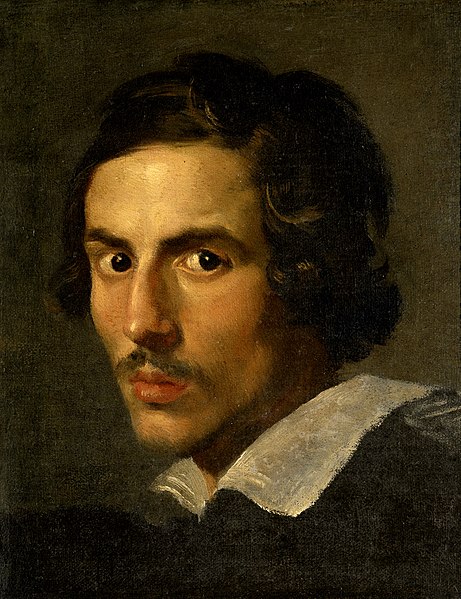
Born: 7 December 1598, Naples
Died: 28 November 1680 (aged 81)
Period: Baroque
The Life of Gian Lorenzo Bernini
Gian Lorenzo Bernini was an Italian artist renowned for his contributions to the Baroque style of art and architecture. Born in Naples but spending most of his life in Rome, Bernini was a child prodigy, showcasing his talent in sculpture from a very young age under the guidance of his father, Pietro Bernini, also a distinguished sculptor. Bernini’s work is characterized by its dynamic movement, emotional intensity, and technical virtuosity, marking a significant departure from the more restrained Renaissance style.
Bernini became the leading sculptor of his era, receiving commissions from popes, cardinals, and royalty. He was not only a sculptor but also an accomplished architect, painter, and stage designer, demonstrating a remarkable ability to blend architecture, sculpture, and painting into a cohesive and dramatic whole. His architectural contributions include the design of St. Peter’s Square in Vatican City, characterized by its vast colonnades that embrace visitors in the arms of the Catholic Church.
Among his most famous sculptures are “Apollo and Daphne,” “The Ecstasy of Saint Teresa,” and “David.” These works, characterized by their dynamic energy and intricate detail, capture moments of intense emotion and physicality, demonstrating Bernini’s mastery of marble. “The Ecstasy of Saint Teresa,” in particular, exemplifies Bernini’s ability to convey spiritual rapture through the interplay of form, light, and shadow.
Bernini’s influence extended beyond sculpture and architecture; he was also involved in urban planning and the design of fountains, most notably the Fontana dei Quattro Fiumi (Fountain of the Four Rivers) in Rome’s Piazza Navona. This fountain, like much of his work, is a theatrical masterpiece that combines sculpture, architecture, and water in a dynamic composition.
Despite facing professional rivalries and changing tastes over his long career, Bernini’s work remained highly sought after, and he was celebrated by his contemporaries as a genius. His legacy endures in the countless works that adorn Rome and other locations, cementing his status as one of the greatest artists of the Baroque period and a pivotal figure in the history of Western art. Bernini’s ability to breathe life into stone and his vision for integrating the arts into a comprehensive expression of the Baroque spirit have left an indelible mark on the cultural heritage of Italy and the world.
Gian Lorenzo Bernini’s Notable Works
Gian Lorenzo Bernini (1598–1680) was an Italian artist and architect who played a pivotal role in the formation of the Baroque style of sculpture. His work is characterized by its dramatic use of movement and its intricate detail, capturing the emotional intensity and dynamic energy of the Baroque era. Bernini was not only a sculptor but also a prominent architect, painter, and playwright, showcasing his versatile talents across various art forms. Here are ten of Bernini’s most famous and influential works:
- David (1623-1624) – Unlike the serene representations by earlier artists, Bernini’s David is captured in the midst of action, portraying the biblical hero with intense concentration and physical dynamism as he prepares to slay Goliath.
- Apollo and Daphne (1622-1625) – This masterpiece depicts the moment from Ovid’s Metamorphoses when Daphne is transformed into a laurel tree to escape Apollo. The sculpture is celebrated for its intricate detailing and the portrayal of transformation with astonishing realism.
- The Ecstasy of Saint Teresa (1647-1652) – Housed in the Cornaro Chapel, Santa Maria della Vittoria, Rome, this group sculpture illustrates a mystical experience of Saint Teresa of Ávila. Bernini’s work captures the spiritual rapture of Teresa in a moment of divine ecstasy with breathtaking emotional intensity and technical skill.
- The Baldachin (1623-1634) – A monumental bronze canopy over the high altar of St. Peter’s Basilica, Vatican City. The Baldachin is an iconic example of Bernini’s architectural genius, blending sculpture and architecture in a grand Baroque statement.
- The Fountain of the Four Rivers (1648-1651) – Located in Piazza Navona, Rome, this elaborate fountain features figures representing the four major rivers of the continents known at the time (the Nile, Ganges, Danube, and Rio de la Plata), supporting an Egyptian obelisk.
- Pluto and Proserpina (1621-1622) – This dynamic sculpture captures the moment Pluto, god of the underworld, abducts Proserpina. The work is famed for its depiction of motion and emotion, particularly the realistic rendering of Proserpina’s flesh under Pluto’s grasp.
- Bust of Medusa (1644-1648) – Merging horror and beauty, this bust captures the head of Medusa, her face contorted in anguish, her hair a tangle of snakes. It demonstrates Bernini’s skill in rendering expressive facial expressions and textures.
- The Chair of Saint Peter (1657-1666) – An ornate, gilded bronze sculpture encasing an ancient wooden chair, believed to have been used by Saint Peter himself. Located in St. Peter’s Basilica, it exemplifies Bernini’s ability to combine sculpture, architecture, and symbolism.
- The Tomb of Pope Urban VIII (1627-1647) – This funerary monument in St. Peter’s Basilica showcases Bernini’s skill in creating monumental works that combine architecture, sculpture, and symbolism to convey the deceased’s virtues and achievements.
- Aeneas, Anchises, and Ascanius (1618-1619) – One of Bernini’s earliest works, depicting a scene from Virgil’s Aeneid where Aeneas carries his father, Anchises, and his son, Ascanius, from burning Troy. It already shows Bernini’s knack for narrative and emotional expression in sculpture.
Bernini’s works are celebrated for their technical virtuosity, emotional intensity, and the seamless integration of artistic elements, making him one of the most important figures in the history of Baroque art.